Blue skies, a gentle breeze and food for the tasting everywhere. Nick Harman spends a few days in the South of France.
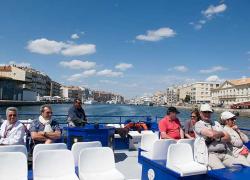 ‘Duck your heads!’ shouts the captain in French. Luckily I speak a bit of the lingo or else right now I’d be a lot shorter in stature. The top of my bonce comes uncomfortably close to the base of the bridge as our flat boat shoots expertly beneath it.
‘Duck your heads!’ shouts the captain in French. Luckily I speak a bit of the lingo or else right now I’d be a lot shorter in stature. The top of my bonce comes uncomfortably close to the base of the bridge as our flat boat shoots expertly beneath it.
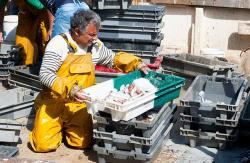 Sète is a sea of bridges. Stitched through with canals that form working highways between the Mediterranean sea on one side and the Thau lagoon on the other, it’s a busy fishing port right to its very centre.
Sète is a sea of bridges. Stitched through with canals that form working highways between the Mediterranean sea on one side and the Thau lagoon on the other, it’s a busy fishing port right to its very centre.
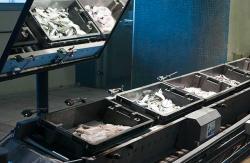 The boats come back in during the afternoon and the fresh fish are taken from under the noses of the squadrons of seagulls straight to the Criée (auction house) on the quay. Later, in the evening, the area changes from fish-strewn place of work to rows of basic restaurants where the catches are prepared and served simply to an appreciative crowd.
The boats come back in during the afternoon and the fresh fish are taken from under the noses of the squadrons of seagulls straight to the Criée (auction house) on the quay. Later, in the evening, the area changes from fish-strewn place of work to rows of basic restaurants where the catches are prepared and served simply to an appreciative crowd.
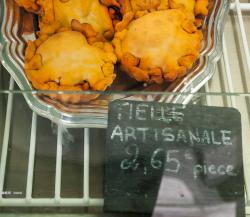 A piece of pie
A piece of pie
Fish is Sète’s raison d’etre and if nothing else you should try the famous Tielles de Sète, tomato, pimento, squid and cuttlefish savoury tarts made in olive oil bread pastry, and the local fish soup made from rockfish.
If you find fish soup too strong, as I do, then perhaps like me you’ve been doing it wrong ‘ dilute one jar of soup with a jar of water,’ the lady selling it tells me.
A piece of cake
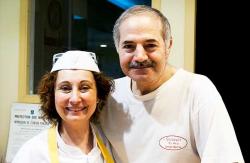 Or if you have a sweet tooth then the Frescati cake shop is a must. Here Serge Aprile and his wife, the fourth generation of cake makers guarding the recipe, make the delicious 1890s cake, one that can survive three days in the heat without refrigeration thanks to its special meringue formula.
Or if you have a sweet tooth then the Frescati cake shop is a must. Here Serge Aprile and his wife, the fourth generation of cake makers guarding the recipe, make the delicious 1890s cake, one that can survive three days in the heat without refrigeration thanks to its special meringue formula.
Herbs and spices
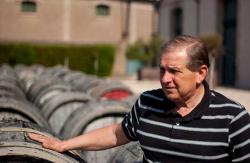 It is very hot in Sète already and it’s still only late May. Perhaps it had been unwise to start the day with a visit to the Noilly Prat‘factory’ in Marseillan 14 kilometres away along the causeway that separates Thau lagoon from the sea.
It is very hot in Sète already and it’s still only late May. Perhaps it had been unwise to start the day with a visit to the Noilly Prat‘factory’ in Marseillan 14 kilometres away along the causeway that separates Thau lagoon from the sea.
Fascinating yes, but perhaps I shouldn’t have sampled quite so many glasses of that moreish mixture of herbs and spices after a tour of the ‘factory’.
Best oysters – ever
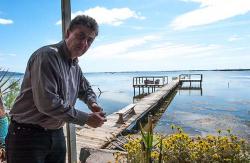 I’d followed that breakfast tipple with a trip to the Medithau oyster farm close by. Here baby oysters are attached to constructions in the lagoon which are regularly raised and lowered, at the command of an iPhone app, solar powered machinery simulates an otherwise non-existent tide. These are the Huîtres Tarbouriech, designed to be plump and perfect and free of any vagaries that can affect’free range’ oysters.
I’d followed that breakfast tipple with a trip to the Medithau oyster farm close by. Here baby oysters are attached to constructions in the lagoon which are regularly raised and lowered, at the command of an iPhone app, solar powered machinery simulates an otherwise non-existent tide. These are the Huîtres Tarbouriech, designed to be plump and perfect and free of any vagaries that can affect’free range’ oysters.
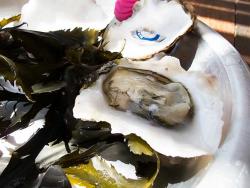 They’re in the process of creating a small restaurant by the lagoon, Le St Barth, modelled on ancestral shacks and here they served me a platter of the oysters with Gérard Jacquinot, the man who designed the solar powered system, wrestling them open on the spot.
They’re in the process of creating a small restaurant by the lagoon, Le St Barth, modelled on ancestral shacks and here they served me a platter of the oysters with Gérard Jacquinot, the man who designed the solar powered system, wrestling them open on the spot.
I have eaten a lot of oysters but these were without doubt the best ever and it’s no wonder top chefs all over France seek them out.
To Montpellier
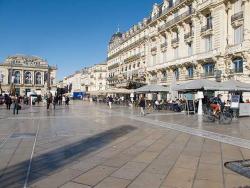 No rest for the hungry though, on this all too brief scoot along the Languedoc- Roussillon coastline, and so after a light lunch in Restaurant L’Escale in Marseillan next to the water it was to Sète followed by an overnight stay in Montpellier’s new Ibis Styles Montpellier Centre Comédie, a playfully modern hotel carved out of old buildings. Whacky it is, dull it is not.
No rest for the hungry though, on this all too brief scoot along the Languedoc- Roussillon coastline, and so after a light lunch in Restaurant L’Escale in Marseillan next to the water it was to Sète followed by an overnight stay in Montpellier’s new Ibis Styles Montpellier Centre Comédie, a playfully modern hotel carved out of old buildings. Whacky it is, dull it is not.
1000 years old Montpellier, the capital of the Languedoc-Roussillon region, is buzzing with renewd energy from the historic old town with its winding little lanes and small busy bars to the modernised main square officially called The place de la Comédie but known to most locals as L’Ouef (egg) due its oval shape.
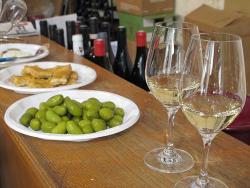 There are plenty of guided tours to help reveal Montpellier’s ancient history but if you’re a DIY visitor feeling hungry wanderinf around the old town will give you plenty to chew on. Don’t miss the lovely local olives, Violette de Montpellier.
There are plenty of guided tours to help reveal Montpellier’s ancient history but if you’re a DIY visitor feeling hungry wanderinf around the old town will give you plenty to chew on. Don’t miss the lovely local olives, Violette de Montpellier.
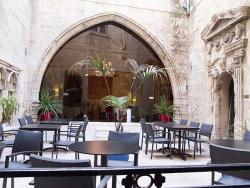 That evening I ate a fabulous dinner in La Diligence, a fine-dining restaurant set in an ancient vaulted building in the historic old town. The food was modern, inventive and colourful in contrast to its ornate surroundings and extremely well priced for the quality of the ingredients and the skills displayed.
That evening I ate a fabulous dinner in La Diligence, a fine-dining restaurant set in an ancient vaulted building in the historic old town. The food was modern, inventive and colourful in contrast to its ornate surroundings and extremely well priced for the quality of the ingredients and the skills displayed.
The South of France still has that je ne sais quoi. I know I’ll be back.
Restaurant La Diligence2 place Pétrarque, 34000 Montpellier
Restaurant L’Escale 18 quai Antonin Gros, Marseillan
More info:
Tourism in Languedoc-Roussillon:
Maison Regionale des Vins 34 Rue Saint-Guilhem, 34000 Montpellier, France
